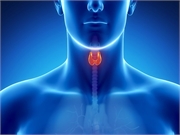Rates higher for responders versus non-World Trade Center-exposed men, but most cases asymptomatic
TUESDAY, April 21, 2020 (HealthDay News) — Excess asymptomatic thyroid cancer in Fire Department World Trade Center (WTC)-exposed rescue/recovery workers is apparently attributable to the identification of occult lesions during medical surveillance, according to a study published online April 20 in JAMA Internal Medicine.
Hilary L. Colbeth, M.P.H., from the Fire Department of the City of New York Bureau of Health Services in Brooklyn, and colleagues classified the method of detection (asymptomatic and symptomatic) of thyroid cancers in 14,987 men monitored through the Fire Department-WTC Health Program (diagnosed from Sept. 12, 2001, to Dec. 31, 2018).
The researchers found that of the 72 post-9/11 Fire Department cases of thyroid cancer identified, 81.5 percent were asymptomatic and 18.5 percent were symptomatic. The overall age-standardized incidence of Fire Department thyroid cancers (24.7 per 100,000 person-years) was significantly higher than the Rochester Epidemiology Project (10.4 per 100,000 person-years) and Surveillance, Epidemiology, and End Results-21 (9.1 per 100,000 person-years). The relative rates of thyroid cancer among symptomatic men in Fire Department cases was not significantly different from men in the Rochester Epidemiology Project (0.8), but the rate of asymptomatic cancers was more than threefold higher than the Rochester Epidemiology Project rate (3.1).
“Among WTC-exposed cohorts and the general population, these findings appear to have important implications for how thyroid cancer incidence rates are interpreted and how diagnoses should be managed,” the authors write.
Copyright © 2020 HealthDay. All rights reserved.








